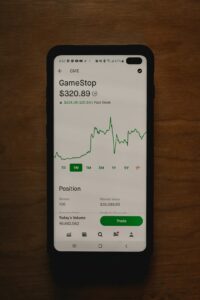Mastering Forex Trading with Live Charts: A Beginner’s Guide
Forex trading, also known as foreign exchange trading, is the buying and selling of currencies on the foreign exchange market. It is the largest and most liquid financial market in the world, with trillions of dollars being traded every day. For beginners stepping into the world of forex trading, it can be overwhelming and complex. However, with the help of live charts, one can gain valuable insights into the market and make informed trading decisions.
What are Live Charts?
Live charts, also known as currency charts or forex charts, are graphical representations of currency pairs and their price movements over time. These charts display the exchange rate between two currencies, such as the USD/EUR or GBP/JPY, and provide traders with a visual representation of how the market is behaving.
Types of Forex Charts:
There are several types of live charts available to forex traders, each with its own advantages and uses. The most commonly used types of charts include line charts, bar charts, and candlestick charts.
1. Line Charts: Line charts are the simplest form of forex charts. They connect the closing prices of currency pairs over a given time period, forming a continuous line. Line charts are useful for providing a general overview of price trends and identifying long-term trends.
2. Bar Charts: Bar charts provide more detailed information compared to line charts. They display the opening, closing, high, and low prices of a currency pair within a specific time frame. Each bar represents one period, such as a day or an hour. Bar charts are helpful in identifying price ranges and market volatility.
3. Candlestick Charts: Candlestick charts are widely used by forex traders due to their ability to provide comprehensive information about price movements. Each candlestick represents a specific time period and displays the opening, closing, high, and low prices. The body of the candlestick is colored, indicating whether the closing price is higher (bullish) or lower (bearish) than the opening price. Candlestick charts help traders identify patterns and trends, such as reversals or continuations.
Benefits of Live Charts:
Live charts offer numerous benefits to forex traders, especially beginners. Here are some of the advantages of using live charts:
1. Visual Representation: Live charts provide a visual representation of price movements, making it easier for traders to analyze and understand the market. By studying the patterns and trends on the charts, traders can identify potential trading opportunities and make informed decisions.
2. Historical Data: Live charts not only display current price movements but also store historical data. Traders can access past price data and analyze patterns to predict future market movements. This historical data can be invaluable for developing trading strategies and backtesting them.
3. Technical Analysis: Live charts are an essential tool for technical analysis in forex trading. Traders use various technical indicators, such as moving averages, oscillators, and trendlines, to analyze price patterns and make predictions. Live charts provide the necessary data to apply these indicators and assess market conditions.
4. Timing Trades: Live charts help traders determine the best time to enter or exit trades. By identifying key support and resistance levels, traders can time their trades for maximum profitability. Live charts also display price action in real-time, allowing traders to react quickly to market movements and adjust their strategies accordingly.
Tips for Mastering Forex Trading with Live Charts:
To effectively utilize live charts for forex trading, beginners should consider the following tips:
1. Learn Technical Analysis: Familiarize yourself with various technical indicators and chart patterns. Understand how to interpret these indicators and use them to make trading decisions.
2. Set Time Frames: Determine the time frame that suits your trading style and goals. Different time frames provide different insights into the market. For example, shorter time frames are suitable for day traders, while longer time frames are useful for swing traders.
3. Practice with Demo Accounts: Many forex brokers offer demo accounts that allow traders to practice trading with virtual money. Use these demo accounts to familiarize yourself with live charts and test your trading strategies without risking real money.
4. Stay Informed: Keep up with economic news, market updates, and geopolitical events that can impact currency prices. Fundamental analysis, combined with technical analysis using live charts, can help you make more accurate predictions.
In conclusion, mastering forex trading with live charts is crucial for beginners looking to navigate the complex world of forex trading. Live charts provide valuable insights into the market and help traders make informed decisions. By learning technical analysis, setting time frames, practicing with demo accounts, and staying informed, beginners can gain the necessary skills to become successful forex traders.






